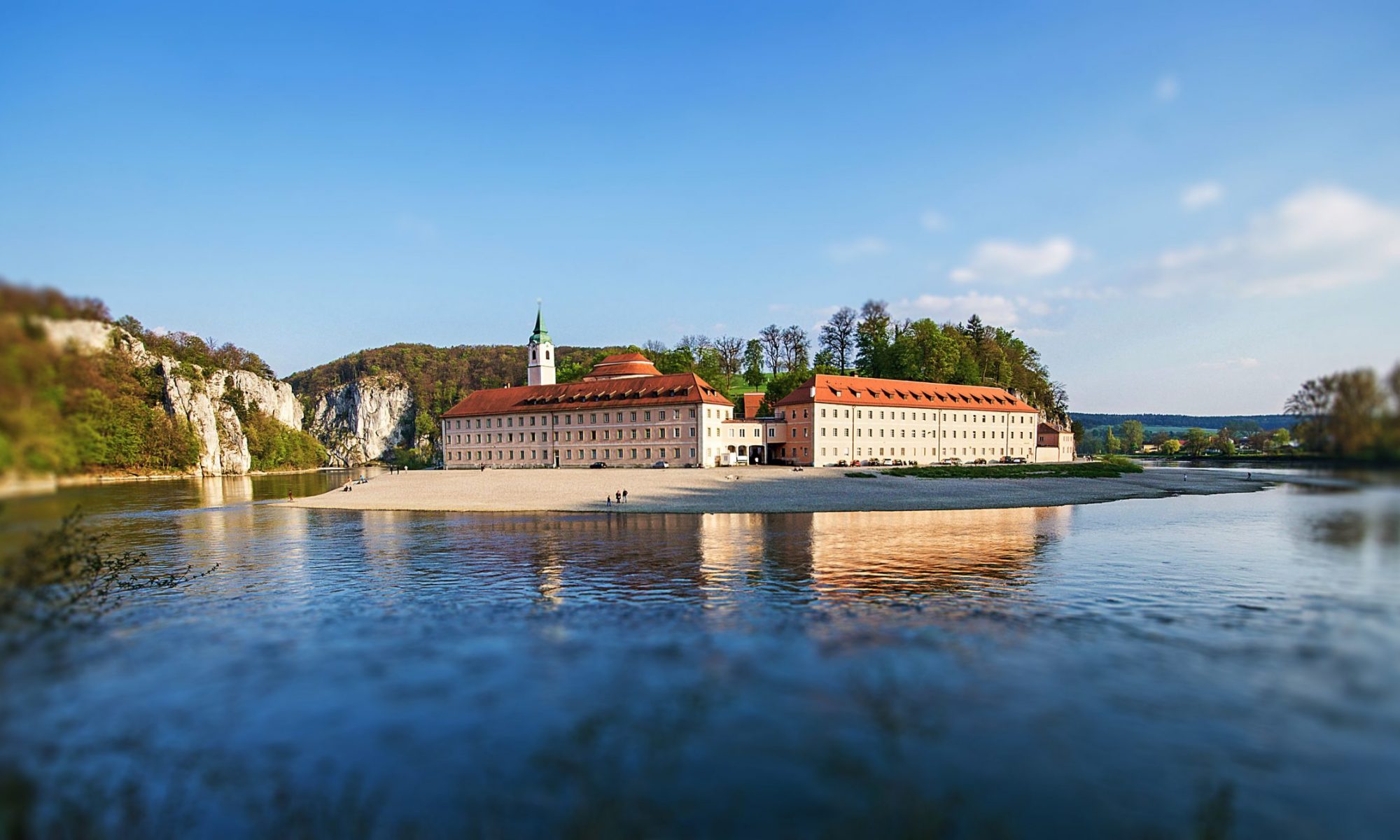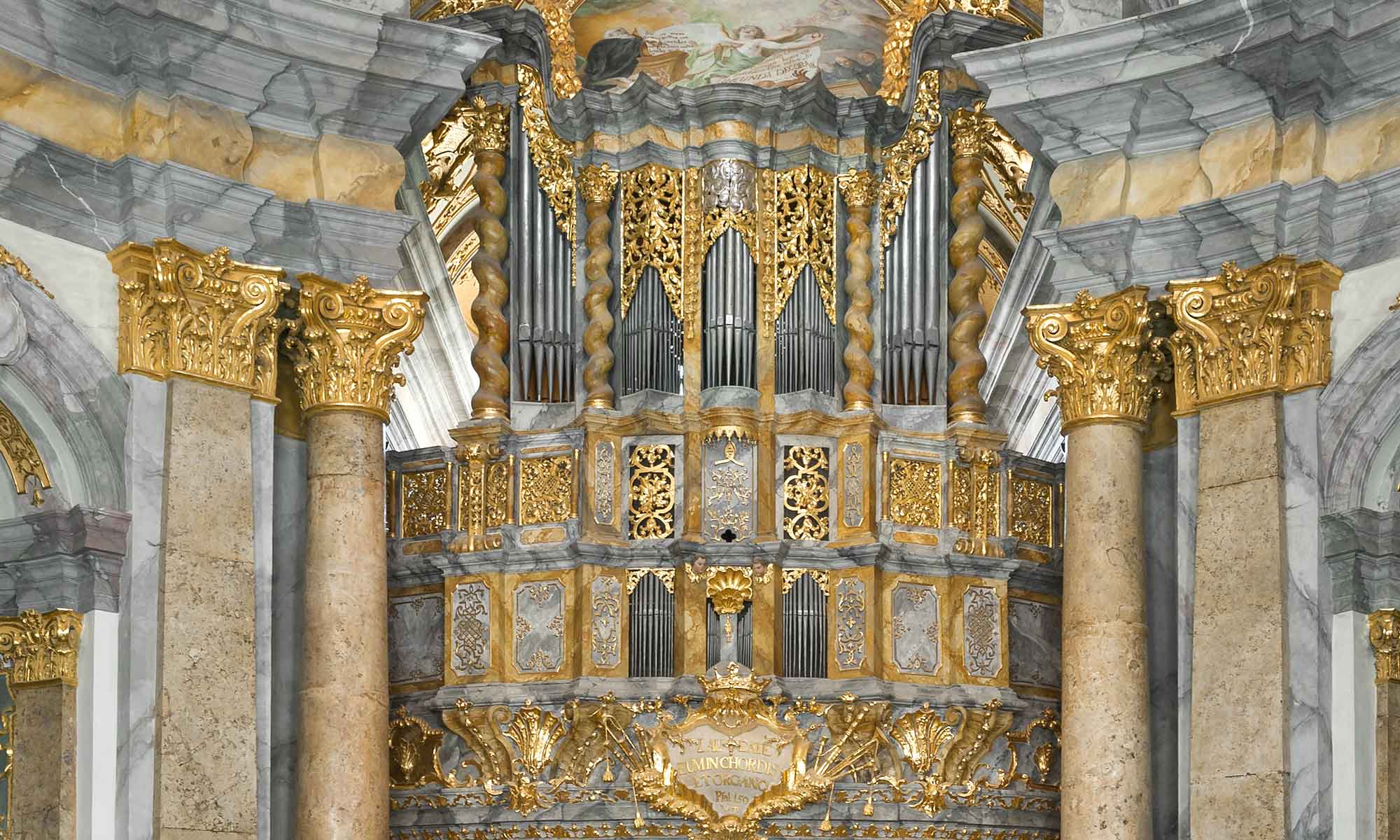Leaving the church, one passes beneath the magnificent Weltenburg marble gallery created for the organ by Pietro Francesco Giorgioli. This organ, built in
1728–29), is characteristic of the famous organ builder J. K. Brandenstein. In its present form, it has 13 registers, which are played from a single manual and pedal. Looking up to the gallery from the nave, one senses a light-filled room behind the organ, tied architectonically to the main space of the church by the surrounding cornice. Reached comfortably via a spiral staircase, the monks’ choir is an intimate space dedicated to choral recitation. Beneath the ceiling vault of 1736, with its Asam fresco admonishing the brethren to attentive prayer, the horseshoe-shaped ranks of polished oak and spruce wood choir stalls (c. 1730) are ornamented with carving and inlay work.
disposition
manual
Main (8′)
Gamba basso (8′)
Gamba disc. (8th’)
Echo (8′)
Copel (8′)
Doldrums (4′)
Gemshorn (4′)
Quint (3′)
Forest doldrums (2′)
Superoctave (2′)
Mixture triple (1′)
Octave (4′)
pedal
sub bass (16′)
octave bass (8′)
Manual range: C, D, E. F, G, A — c’
Pedal range: C, D, E, F, G, A – a°. The manual registers also sound via the pedal, so it is “attached” and has two additional pedal registers.
Mechanical actions left in their historical condition.
The wind turbine works with a fan and magazine bellows or with three reconstructed wedge bellows, as they were common in 1729; they are wound either by hand or by electric motors, as in the past, as is the case with our recording.
Audio example: Pastorale in F major, BWV 590 from the CD Donauklöster Weltenburg, Metten, Niederaltaich, available in the monastery shop.


